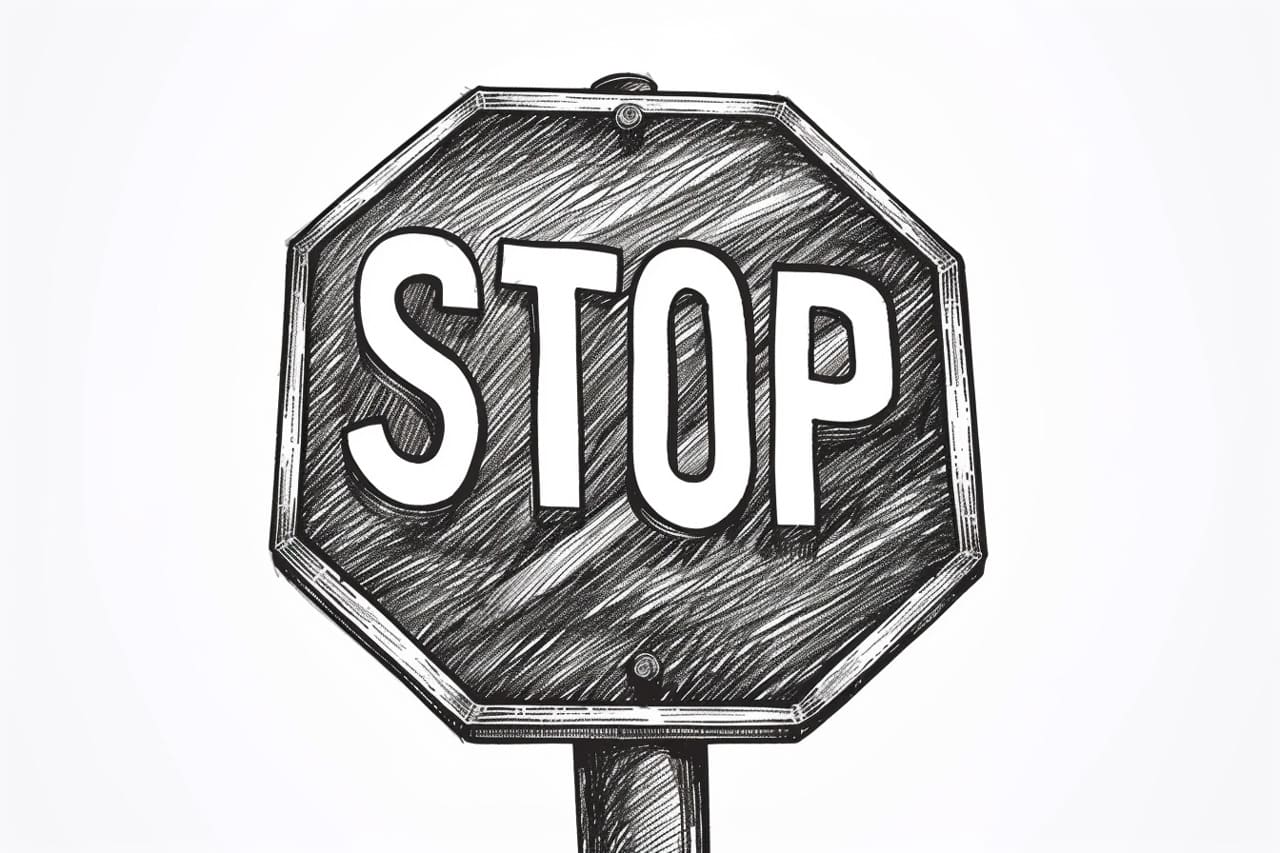Drawing a stop sign may seem like a straightforward task, but it requires precision and attention to detail. Whether you are an aspiring artist or simply looking to improve your drawing skills, this step-by-step guide will walk you through the process of creating a realistic and visually appealing stop sign. By following these instructions, you will be able to create a stop sign that looks professional and conveys its intended message effectively.
Materials Required
Before we begin, let’s gather the materials you will need to complete this drawing:
- Paper: Choose a smooth and sturdy paper that is suitable for drawing. A standard drawing paper or sketchbook will work well.
- Pencil: Opt for a medium-soft graphite pencil that allows for smooth shading and precise line work. It’s also helpful to have an eraser nearby.
- Ruler: A straight edge ruler is essential for creating accurate straight lines.
- Red Marker or Colored Pencil: To add color to your stop sign, you will need a red marker or colored pencil. Make sure it’s a shade of red that closely resembles the color of a stop sign.
- Black Marker or Colored Pencil: This will be used to outline the stop sign and add any necessary details.
Now that you have all the necessary materials, let’s dive into the step-by-step process of drawing a stop sign.
Step 1: Draw a Circle
Start by drawing a perfect circle in the center of your paper. Use your ruler to ensure the circle is symmetrical and well-proportioned. This circle will serve as the outline for your stop sign.
Step 2: Add the Octagon Shape
Inside the circle, draw an octagon shape. Begin by drawing a horizontal line that cuts through the center of the circle. Then, draw two diagonal lines that intersect at the center of the circle. Connect the ends of these lines with straight lines to create the octagon shape. Take your time to make sure the lines are straight and evenly spaced.
Step 3: Outline the Stop Sign
Using a black marker or colored pencil, outline the octagon shape. Start with the corners of the octagon and connect them with straight lines. Make sure the lines are bold and well-defined, as they will give your stop sign a clear and recognizable shape.
Step 4: Add the Letters “S” and “T”
Inside the octagon, draw the letters “S” and “T” to complete the word “STOP.” Start with the letter “S” by drawing a vertical line in the center of the octagon. Then, curve the line to form the top and bottom parts of the letter. Repeat the same process for the letter “T,” making sure it is positioned next to the letter “S” and is visually balanced.
Step 5: Draw the Border
Draw a thick border around the entire stop sign using a black marker or colored pencil. This will make the sign more prominent and add a finished look to your drawing. Ensure that the border is even on all sides and follows the shape of the octagon.
Step 6: Erase Unnecessary Guidelines
Take your eraser and carefully remove any unnecessary guidelines, such as the circle and the diagonal lines used to create the octagon. This will leave you with a clean and clear stop sign outline.
Step 7: Color the Sign
Now it’s time to bring your stop sign to life with color. Use a red marker or colored pencil to fill in the entire interior of the sign. Ensure that the color is vibrant and evenly applied. Take your time to avoid smudging the color outside the borders.
Step 8: Add Shadows and Highlights
To make your stop sign look more realistic, add shading to create shadows and highlights. With a black marker or colored pencil, darken the bottom and right sides of each letter, as well as the right side of the octagon. This will give the sign a three-dimensional appearance. Use your pencil to lightly shade the left side of each letter and the left side of the octagon to create a subtle highlight effect.
Step 9: Final Details
Inspect your drawing for any final touch-ups or details that may be missing. Make sure all lines are bold and well-defined, and the colors are vibrant. Add any necessary adjustments to ensure your stop sign looks polished and professional.
Conclusion
Drawing a stop sign requires attention to detail and precision, but by following these step-by-step instructions, you can create a realistic and visually appealing sign. Remember to gather the necessary materials before you begin and take your time with each step. With practice, you will be able to draw stop signs with ease and confidence. So grab your paper and pencil, and let’s start drawing!









